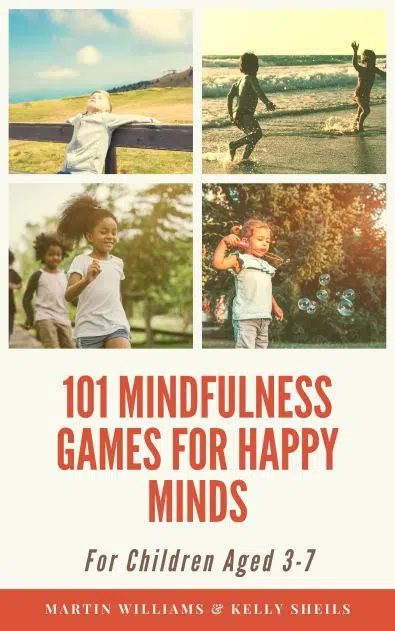Being able to control our breathing is one of the best ways of calming us down.
All children, and particularly those that are prone to worry or anxiety, will find learning some breathing games to have huge benefits.
The big thing to remember is make it fun! Turn the practice of controlling our breathing into a game, and children are much more likely to want to try it.
In this article, I look at the best 15 breathing games for kids, which are:
- Bunny Breathing
- Teddy Breathing
- Breathing Out Colours
- Feather Breathing
- Whistle Breathing
- Take 5 Breathing
- ‘My Magic Breath’ Book
- Imaginary Bubbles
- Balancing
- One Nostril Breath
- Bumble Bee Breathing
- Bubbles
- ‘Breathe Like A Bear’
- Dragons
- Dandelions
First, I’ll quickly look at why breathing is so important, before then diving into those wonderful games…
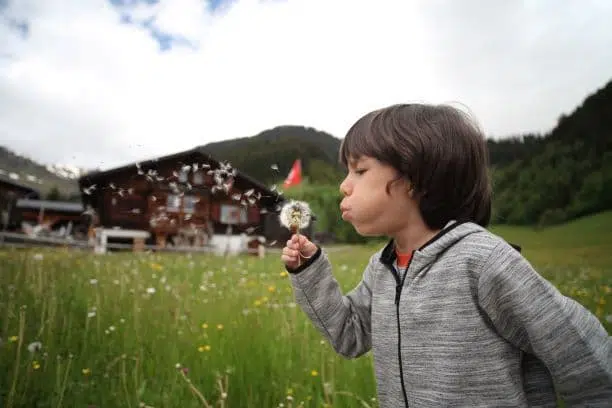
The Importance Of Breathing
Why is breathing such a big deal in mindfulness?
There’s actually a few reasons, and all of them have positive effects on our minds, and also on the ability to learn. All-in-all, something as simple as breathing can have a massive impact on children’s mental health.
In school or childcare settings, children are continually surrounded by many others.
This has many good aspects, but there are also a few negative side-effects – a big one being overwhelm.
Dealing With Anxiety
Children are surrounded by activity, and can become over-stimulated as there’s just so much going on.
There is often going to be some conflict and things going wrong, and this is exacerbated by the number of people around them. Children are wrapped up in an environment of activity, flux, and challenge.
So, where does breathing come in?
When we are stressed or anxious, our breathing becomes quicker and more shallow.
This originates from the ‘flight or fight’ instinct. Stress increases adrenaline, which increases the speed of breathing.
Many children are partly in this ‘flight or fight’ state for a large proportion of their lives. In this state you have less control over the way you think and the way you act.
But probably the best way of releasing them out of this state is breathing.
Long and slow breathing has a calming effect.
It reduces stress.
It actually helps us think much clearer and get back that element of control that is often lost when we are entering into a ‘flight or fight’ state.
But How Do You Teach Breathing?
The thing is, teaching breathing techniques to children is very different to doing it for adults. It works best if it is fun! It also works best if there is some element of make-believe, or imagination, and that the whole thing is turned into a game.
That’s what all the following games have in common – they are fun and imaginative.
Another thing that is great about them is that they are quick. They can be thrown into your busy day to provide moments of calm, and regeneration.
Here, then, are some of the very best breathing games for kids…
1. Bunny Breathing
A nice and simple idea to warm up with. The children are all now bunnies, and they are going to be sniffing the air (the way bunnies do).
Encourage the children to put their noses into the air and take lots of quick sniffs in through the nose, and then a long breath out through their mouth.
This easy idea is a way of getting them to regulate their breathing in a fun and imaginative way.
2. Teddy Breathing
Some kind of toy is required for this game.
It could be a teddy bear, or whatever other toys you have to hand will be fine.
The children all have one cuddly toy each, and they lie down with it on the floor. They try to balance the toy on their chest, and they are going to watch it as they lie still.
The teddy (or toy) will be rising up and down with their chest as they breathe in and out.
This is a brilliant game for breath control. If you breathe more deeply, the toy will move up and down in more exaggerated movements. Breath more shallowly, and it moves less.
Some suggestions you can make to the children are:
- Try to hold your breath for a few moments so the toy is still
- Try to move it up and down quickly. They often find this quite funny which can lead to the next idea…
- See what happens when you laugh
- Use really slow deep breaths. These are great for calming, but the children will be focused on the toy moving slowly
To take a look at lots more games you can try out with a teddy or puppet, then take a look at this.
3. Breathing Out Colours
There is a psychological link between colours and feelings.
For example, blue or grey are often associated with sadness. Yellow is often associated with sunlight and happiness.
Of course, not all people have the same emotion associated to a colour. However, being able to imagine a colour and then ‘breathe it out’ can provide a sense of empowerment and control.
What you do is this – ask the children to think of a colour that makes them happy.
Then get them to close their eyes, and take a deep breath in through their nose. As they breathe out, imagine that the room is filling with that colour. Keep breathing out, and filling the room with the colour.
An easier way to do it is to suggest the colour. For example, pick a colour like red. Close their eyes, and breathe out the colour red, filling the room.
This is a beautiful visualisation activity, where children get to imagine their control over the world.
4. Feather Breathing
This is a really simple breathing game, that is good even for young children to attempt.
You need at least one feather per child to start with. A bag of coloured feathers is perfect for this (the kind you might get in an arts and crafts shop).

Demonstrate how to do it first. Take one feather and place it in your hand. Then breathe in, and breathe out onto the feather, blowing it out of your hand. It’s that simple!
The children all take a feather and then try to blow it out of their own hands.
The next step is to try to blow out in a really gentle way, so that the feather doesn’t fall off your hand. You will see it rustling slightly, and maybe slightly moving, but not flying off.
This game really helps them to control and calm their breathing.
5. Whistle Breathing
A whistle is probably the simplest wind instrument that children can try out.
For this activity, you need one whistle per child. You can normally buy packs of whistles really cheaply. It’s probably an activity you can only do once, unless you sterilise the whistles (which is definitely an option). If you do it just once, you can always send the whistles home with the children at the end. The parents will love you for this, we promise you (big wink!).
There are lots of games you try with the whistles, all of which really help children to control their breathing.
Outdoors is probably best for this, and just be careful not to really upset the neighbours.
Demonstrate how to use the whistle, and then give them out. The children can experiment with blowing into it to start with.
It’s good to have some kind of ‘stop!’ hand signal, so children know when to know when to stop blowing. Practise this, and be firm!
Demonstrate how to experiment with different types of noises.
You can:
- Try to make a really quiet noise
- Make a really loud noise! (hold your ears)
- Make a wobbly noise
- Make a fast succession of noises
- Go quiet-loud-quiet-loud in crescendos and diminuendos
6. Take 5 Breathing
This is a beautiful mindful finger play that is great for practising breathing.
Put your hand out and spread the fingers out wide.
Then, with the index finger or your other hand, slide up one finger and down the other side.
As you slide up a finger, breathe in through your nose. As you slide down, breathe out through your mouth.
Keep going with different fingers.
A great way to focus their attention, and calm things down as well.
7. ‘My Magic Breath’ Book
There are several good quality mindfulness books for young children, but definitely the number one go-to guide is ‘My Magic Breath’ by Nick Otner and Alison Taylor.
This book is a beautifully interactive experience, with the children able to breathe along as it is read to them.
It gives children the magical tool of breathing to find calm in the busy world we live in.
8. Imaginary Bubbles
This is a kind of group role-play activity.
Like many of the best mindfulness games, absolutely no resources are required.
The children are going to imagine that they will blow bubbles. They have an imaginary pot of bubble mixture in their hand and a pretend bubble wand.
They put the wand to their mouths and blow ‘bubbles’.
This is another excellent game for controlling breathing.
Some ways the children can blow bubbles include:
- Blowing really big bubbles, with long controlled breaths
- Blowing lots of little bubbles, with rapid breaths
- Blowing in different directions
9. Balancing
This is a slightly trickier mindfulness game, that is great for children that like building with blocks.
It is good to try as a pairs game.
One child is going to lie on the, facing up.
The other child is going to have a few small wooden blocks. They are going to try to build a small tower of blocks on the other child’s body.
Somewhere like the chest or belly is a good place to start.
The child lying down must try to control their breathing so the tower doesn’t fall.
When they have tried building a tower for a few minutes, then swap roles, and the other child has a go of building.
There are many ways of adapting this game, such as:
- Build on different parts of the body, e.g. back of the hand, or the back (if the child is lying face down)
- Play the game sat up not lying down
- Try to build a tower on your own body
10. One Nostril Breath
This is another child-friendly way of experimenting with a fun way of breathing that draws attention to how we breathe, and also helps to control it.
It’s very simple this idea – children put a finger over one nostril, breathe in through the other one, and out through their mouth.
They repeat this a few times, and then switch over to put their finger on their other nostril.
11. Bumble Bee Breathing
First, demonstrate what a bumble bee hum sounds like. The children enjoy humming like this, and it is great for speech and language skills, and early phonics (as well as all the super mindfulness benefits).
The idea of this activity is that the children breathe in silently through their noses, and then breathe out with by making a hum with their mouths (like a bee).
After they have had a go of doing this a few times, get them to put their hands over their ears as they breathe out. This makes them aware of vibrations through their head.
12. Bubbles
Blowing bubbles can be really therapeutic.
It engages children’s curiosity and natural enthusiasm, as well as being a great way for harnessing breath control.
Use something like the little party pots of bubble mixture you can get for this with the little wands.
You can even make your own bubble wands out of sticks with pipe-cleaners twisted into circles. These make a beautiful natural activity:
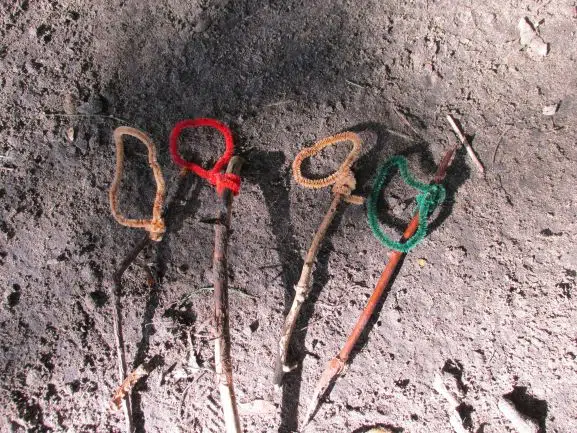
Experiment with some of the following:
- Blow long and smoothly to create big bubbles
- Blow harder for lots of small bubbles
- Pop your friend’s bubbles (if they let you)
- Pop the bubbles and count at the same time
If you’re looking for more bubbles games, then check out my 21 bubbles games for kids that actually work.
13. ‘Breathe Like A Bear’
This is another spectacular mindfulness book.
‘Breathe Like A Bear’, by Kira Willey contains a wide range of breathing exercises and movements that help with children to create a sense of calm in their lives.
It is wonderfully interactive and child-friendly, and definitely worth a look.
14. Dragons
This is one of my all-time favourite bubbles activities, and is also really useful as a deep breathing exercise.
For this, each child needs one plastic bottle each. The adult is going to cut the bottom off the plastic bottle.
Then you need some kind of sock to put on the end of each plastic bottle. It will look something like this:
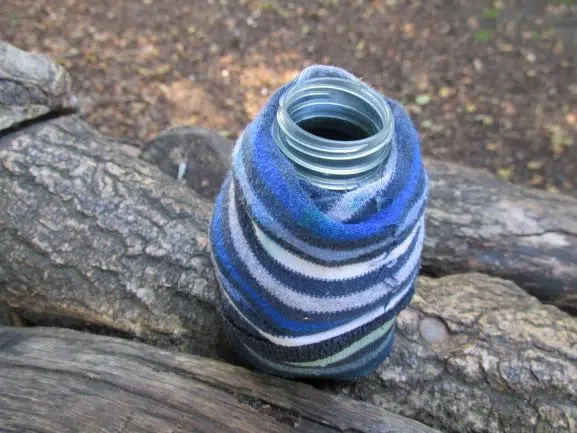
Then get some bubble mixture.
The idea is to dip the end of the bottle into the bubble mixture, and then blow through it. Lots of foam will fly out of the end of the sock!
This is super-exciting.
When we made these, we used green socks as then they were dragons! We squirted yellow and red paint on the end, so that the foam that came out was fire coloured.
I can’t tell you how exciting this was.
A fantastic activity to get children breathing deeply repeatedly, and also great for all sorts of other skills. You can, for example, measure how long the foam trails are that come out of the dragons.This is one of 50 beautiful activities that you can find in my book ’50 Outdoor Number Activities On A Budget’ that you can download for free here
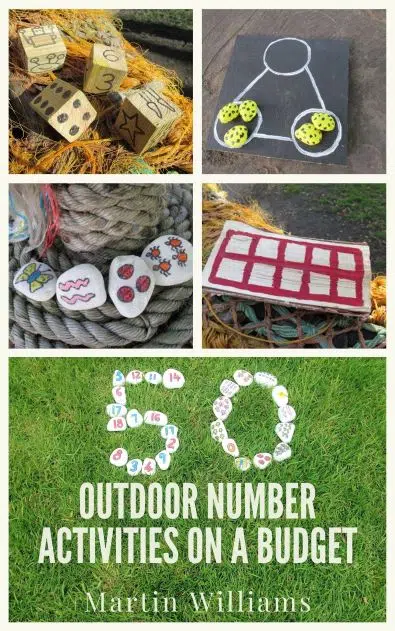
15. Blowing Dandelions
Here’s a super simple way of getting back to nature, and mixing this with some deep breathing as well.
Of course this can only really be done in the summer when the dandelions are out (assuming they grow wherever you are in the world).
Pick a dandelion, and blow it. It’s as simple as that.
It usually requires lots of breaths to blow all the seeds off the stalk.
101 Games
Many of the above games are included in our book 101 Mindfulness Games For Happy Minds – For Children Aged 3-7.
This book is packed full of 101 outstanding mindfulness games that you can use to relax children, and ultimately help them learn more effectively.
It will be released on Amazon on 10th October 2020.
